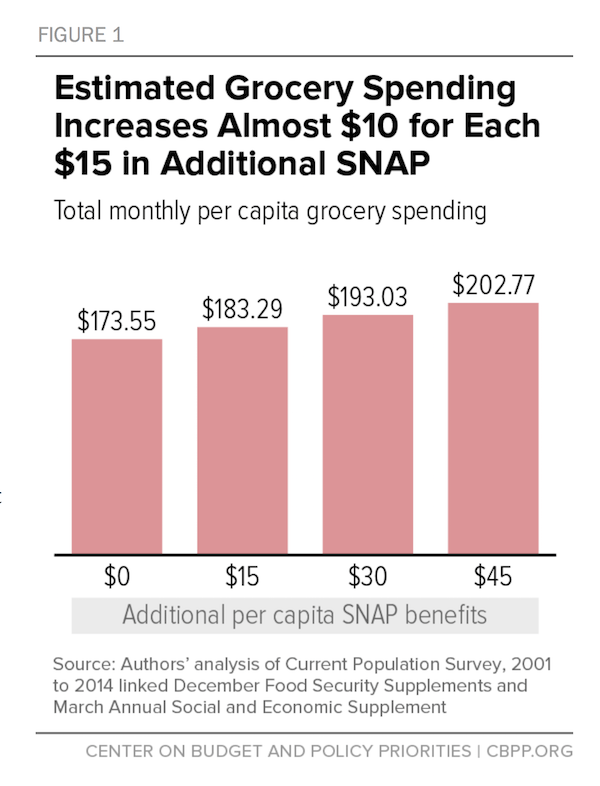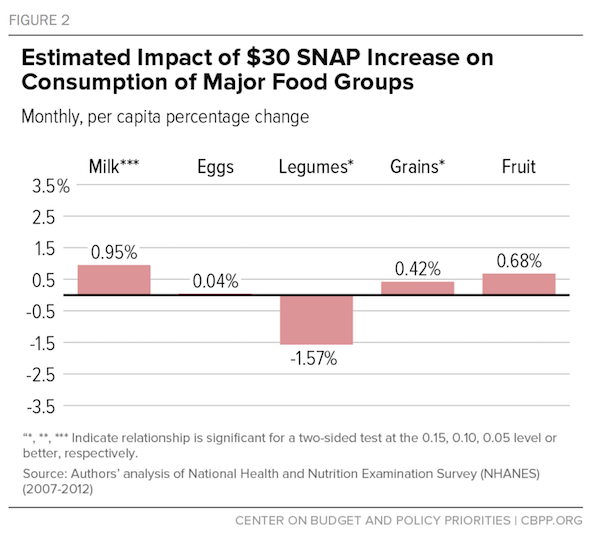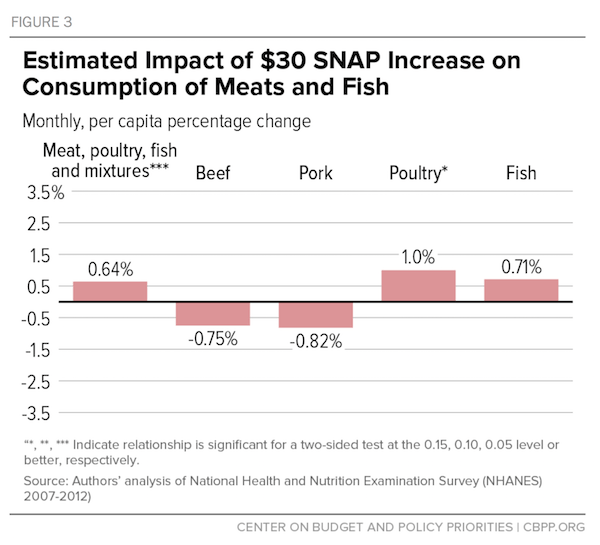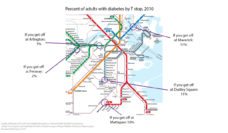The average recipient of U.S. government food assistance (Supplemental Nutrition Assistance Program [SNAP]) gets just $125 per month, which works out to just over $4 per day, or about $1.39 per meal. Similarly, the average household receiving benefits gets about $255 per month. SNAP benefits are intended to supplement food needs, not meet them in their entirety, but even still are not enough. And further, gross benefit size has decreased during this decade – that is, the dollar amount individuals get is trending downward.
A recent study from the Center for Budget and Policy Priorities (CBPP) demonstrates the positive impacts of an increase of just $1 per day in SNAP benefits. Specifically, the study reinforces evidence that increased SNAP benefits lead to increased spending on groceries, a valued measure of the program’s ability to target assistance to food needs rather than general family income needs. In addition, the study made progress in understanding the largely opaque issue of the impact of increased SNAP benefits on recipients’ diet quality. An increase of $1 per day in SNAP benefits was associated with increased consumption of vegetables overall , especially tomatoes and yellow vegetables (Figure 1). Trends in meat consumption were also healthful, with increases in more nutritive fish and poultry and accompanying decreases in pork and beef.

Non-food outcomes associated with a $1 per day increase in SNAP benefits included reduced food insecurity, reduced consumption of fast food, and increased time spent shopping for and preparing food, all of which are associated with increased health (Figure 2).

These positive findings are related to the specific amount of increase in SNAP benefits. Although SNAP benefits can only be spent on groceries, increases in SNAP benefits do not necessarily result in identically-sized increases in grocery spending. For instance, if a family spends $200 per month on groceries, and $100 of that is provided by SNAP benefits, an increase in SNAP benefits of $10 might result in a continued grocery budget of $200 per month, the only difference being that now $110 of that budget is funded by SNAP benefits. The “extra” $10 the family gains monthly may be redirected to any number of other needs, such as housing, clothing, transportation, or leisure.
The new study’s findings are compelling precisely because they demonstrated that increased SNAP benefits did result in increased grocery spending . Specifically, calculations indicate an increase of $30 per month in SNAP benefits results in an increase of just under $20 per month in spending on food (Figure 3). As the results outlined above suggest, just a $20 increase in a monthly grocery budget has valuable impacts on diet quality.

SNAP provides a critical supplement to the food resources of 45 million Americans. Given the limited and supplemental nature of SNAP benefits, the program’s success is contingent on having meaningful impacts with minimal resources. Increasing that benefit from $4 to just $5 per day could reduce food insecurity and improve diet quality and nutrition at a relatively low cost.
Maintaining the SNAP program and increasing benefits are supported by public health and economic knowledge. Piloting a small benefit increase, like that discussed above, in several diverse states would offer the chance to further assess health and economic impacts, including wider-ranging economic impacts of hunger, such as medical care, productivity loss, and child development outcomes. Under a new administration, which has clearly signaled business success is a high priority, emphasizing and exploring the business case for increase SNAP benefits could be a politically viable route to support improved population health.
Featured Image: Frank Boston, Dollar Bill Reverse, used under CC BY 2.0
Graphs from The Relationships Among SNAP Benefits, Grocery Spending, Diet Quality, and the Adequacy of Low Income Families’ Resources By Patricia M. Anderson and Kristin F. Butcher














